Here is this week’s selection of advanced articles of interest to crystal engineers from across the RSC journals
Articles are chosen from:
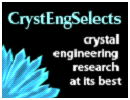 ChemComm,
ChemComm,
Chemical Science,
CrystEngComm,
Dalton Transactions,
Journal of Materials Chemistry,
Nanoscale,
New Journal of Chemistry,
RSC Advances.
Guest-induced crystal-to-crystal expansion and contraction of a 3-D porous coordination polymer
Witold M. Bloch and Christopher J. Sumby
Chem. Commun., 2012, Advance Article
DOI: 10.1039/C2CC17440E, Communication
Occurrence of spontaneous resolution of ketoprofen with a racemic crystal structure by simple crystallization under nonequilibrium preferential enrichment conditions
Rajesh G Gonnade, Sekai Iwama, Ryusuke Sugiwake, K Manoj, Hiroki Takahashi, Hirohito Tsue and Rui Tamura
Chem. Commun., 2012, Accepted Manuscript
DOI: 10.1039/C2CC18132K, Communication
Solvent-induced single-crystal to single-crystal transformation of a 2D coordination network to a 3D metal-organic framework greatly enhances porosity and hydrogen uptake
Wenbin Lin, Liang Wen and Peng Cheng
Chem. Commun., 2012, Accepted Manuscript
DOI: 10.1039/C2CC17298D, Communication
Breathing Molecular Crystals: Halogen and Hydrogen Bonded Porous Molecular Crystals with Solvent Induced Adaptation of the Nano-sized Channels
Kari Raatikainen and Kari Rissanen
Chem. Sci., 2012, Accepted Manuscript
DOI: 10.1039/C2SC00997H, Edge Article
Role of intermolecular interactions involving organic fluorine in trifluoromethylated benzanilides
Piyush Panini and Deepak Chopra
CrystEngComm, 2012, Advance Article
DOI: 10.1039/C2CE06254B
Homochiral lanthanoid(III) mesoxalate metal–organic frameworks: synthesis, crystal growth, chirality, magnetic and luminescent properties
Beatriz Gil-Hernández, Jana K. Maclaren, Henning A. Höppe, Jorge Pasán, Joaquín Sanchiz and Christoph Janiak
CrystEngComm, 2012, Advance Article
DOI: 10.1039/C2CE06496K
Synthon preferences in cocrystals of cis-carboxamides:carboxylic acids
Alaina M. Moragues-Bartolome, William Jones and Aurora J. Cruz-Cabeza
CrystEngComm, 2012
DOI: 10.1039/C2CE06241K
Enhanced formation of PbSe nanorods via combined solution–liquid–solid growth and oriented attachment
Min-Seok Kim and Yun-Mo Sung
CrystEngComm, 2012, DOI: 10.1039/C2CE06353K
A family of 2D and 3D coordination polymers involving a trigonal tritopic linker
Ines Maria Hauptvogel, Volodymyr Bon, Ronny Grünker, Igor A. Baburin, Irena Senkovska, Uwe Mueller and Stefan Kaskel
Dalton Trans., 2012, Advance Article
DOI: 10.1039/C2DT12072K, Paper
Nanocrystalline CaYAlO4:Tb3+/Eu3+ as promising phosphors for full-color field emission displays
Dongling Geng, Guogang Li, Mengmeng Shang, Chong Peng, Yang Zhang, Ziyong Cheng and Jun Lin
Dalton Trans., 2012, Advance Article
DOI: 10.1039/C2DT12222G, Paper
Effect of ZnS and CdS coating on the photovoltaic properties of CuInS2-sensitized photoelectrodes
Guoping Xu, Shulin Ji, Chunhui Miao, Guodong Liu and Changhui Ye
J. Mater. Chem., 2012, Advance Article
DOI: 10.1039/C2JM15908B, Paper
A new building block, bis(thiophene vinyl)-pyrimidine, for constructing excellent two-photon absorption materials: synthesis, crystal structure and properties
Dugang Chen, Cheng Zhong, Xiaohu Dong, Zhihong Liu and Jingui Qin
J. Mater. Chem., 2012, Advance Article
DOI: 10.1039/C2JM14766A, Paper
Large area, soft crystalline thin films of N,N′,N′′-trialkyltriazatriangulenium salts with homeotropic alignment of the discotic cores in a lamellar lattice
Thomas Just Sørensen, Christoffer B. Hildebrandt, Jonas Elm, Jens W. Andreasen, Anders Ø. Madsen, Fredrik Westerlund and Bo W. Laursen
J. Mater. Chem., 2012, Advance Article
DOI: 10.1039/C2JM15954F, Paper
Magnetic spherical cores partly coated with periodic mesoporous organosilica single crystals
Jing Li, Yong Wei, Wei Li, Yonghui Deng and Dongyuan Zhao
Nanoscale, 2012, Advance Article
DOI: 10.1039/C2NR11941B, Paper
A highly stable, efficient visible-light driven water photoelectrolysis system using a nanocrystalline WO3 photoanode and a methane sulfonic acid electrolyte
Renata Solarska, Rafał Jurczakowski and Jan Augustynski
Nanoscale, 2012, Advance Article
DOI: 10.1039/C2NR11573E, Communication
Seeded growth induced amorphous to crystalline transformation of niobium oxide nanostructures
Subhra Jana and Robert M. Rioux
Nanoscale, 2012, Advance Article
DOI: 10.1039/C2NR11803C, Paper
Sonochemistry synthesis and enhanced photocatalytic H2-production activity of nanocrystals embedded in CdS/ZnS/In2S3 microspheres
Zaoyu Shen, Gang Chen, Qun Wang, Yaoguang Yu, Chao Zhou and Yu Wang
Nanoscale, 2012, Accepted Manuscript
DOI: 10.1039/C2NR12045C, Paper
Synthesis and thermal behavior of chiral dimers: occurrence of highly frustrated and cholesteric liquid crystal phases
G. Shanker and C. V. Yelamaggad
New J. Chem., 2012, Advance Article
DOI: 10.1039/C2NJ21035E, Paper
Cation binding resorcinarene bis-crowns: the effect of lower rim alkyl chain length on crystal packing and solid lipid nanoparticles
Kaisa Helttunen, Kirsi Salorinne, Tahnie Barboza, Hélène Campos Barbosa, Aku Suhonen and Maija Nissinen
New J. Chem., 2012, Advance Article
DOI: 10.1039/C2NJ20981K, Paper
Improved Electrochemical Performances of Nanocrystalline Li[Li0.2Mn0.54Ni0.13Co0.13]O2 Cathode Material for Li-ion Batteries
Yuliang Cao
RSC Adv., 2012, Accepted Manuscript
DOI: 10.1039/C2RA20122D, Paper
Synthesis of CaCO3/graphene composite crystals for ultra-strong structural materials
Xiluan Wang, Hua Bai, Yuying Jia, Linjie Zhi, Liangti Qu, Yuxi Xu, Chun Li and Gaoquan Shi
RSC Adv., 2012, Advance Article
DOI: 10.1039/C2RA00765G, Paper
Tailoring cobalt doped zinc oxide nanocrystals with high capacitance activity: factors affecting structure and surface morphology
Marauo Davis, Cenk Gümeci, Bria Black, Carol Korzeniewski and Louisa Hope-Weeks
RSC Adv., 2012, Advance Article
DOI: 10.1039/C2RA00793B, Paper
Comments Off on This weeks CrystEngSelects


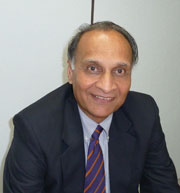









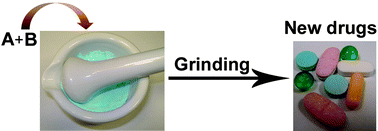 This CrystEngComm Highlight provides a brief overview of advances in the synthesis of new pharmaceutical forms, based on molecular assembly through non-covalent interactions or coordination bonds which have been provided through mechanochemical methods of neat and liquid-assisted grinding. In particular, it has been shown that liquid-assisted grinding provides an environment free of solubility-based limitations inherent to solution-based cocrystallisation, thereby leading to highly efficient screening for polymorphs, cocrystals and salts. The applicability of liquid-assisted grinding and subsequently derived ion-and liquid-assisted grinding has been recently extended to the area of metal-based pharmaceuticals and metallodrugs. The work suggests mechanochemical screening may have a pivotal role in the future development of pharmaceutical solid forms and, potentially, in the covalent synthesis of drug candidates.
This CrystEngComm Highlight provides a brief overview of advances in the synthesis of new pharmaceutical forms, based on molecular assembly through non-covalent interactions or coordination bonds which have been provided through mechanochemical methods of neat and liquid-assisted grinding. In particular, it has been shown that liquid-assisted grinding provides an environment free of solubility-based limitations inherent to solution-based cocrystallisation, thereby leading to highly efficient screening for polymorphs, cocrystals and salts. The applicability of liquid-assisted grinding and subsequently derived ion-and liquid-assisted grinding has been recently extended to the area of metal-based pharmaceuticals and metallodrugs. The work suggests mechanochemical screening may have a pivotal role in the future development of pharmaceutical solid forms and, potentially, in the covalent synthesis of drug candidates.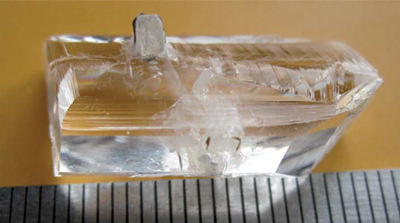
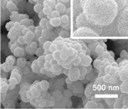




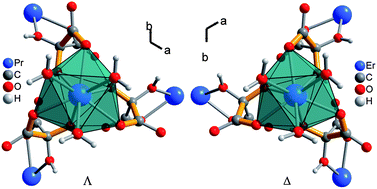 In this HOT Article, the achiral mesoxalato ligand (H2mesox2-) is identified as a new enantiopurity enforcer in extended structures by yielding the homochiral metal-organic frameworks (MOFs) 2D-[Ln2(µ-H2mesox)3(H2O)6]. The chirality of the compounds can be observed in the features of the crystal structure and also in the dominating intensity of the hypersensitive transition within trivalent europium, which reacts strongly to the absence of a local inversion centre and proves the chiral environment of the rare-earth ions within the complexes.
In this HOT Article, the achiral mesoxalato ligand (H2mesox2-) is identified as a new enantiopurity enforcer in extended structures by yielding the homochiral metal-organic frameworks (MOFs) 2D-[Ln2(µ-H2mesox)3(H2O)6]. The chirality of the compounds can be observed in the features of the crystal structure and also in the dominating intensity of the hypersensitive transition within trivalent europium, which reacts strongly to the absence of a local inversion centre and proves the chiral environment of the rare-earth ions within the complexes.